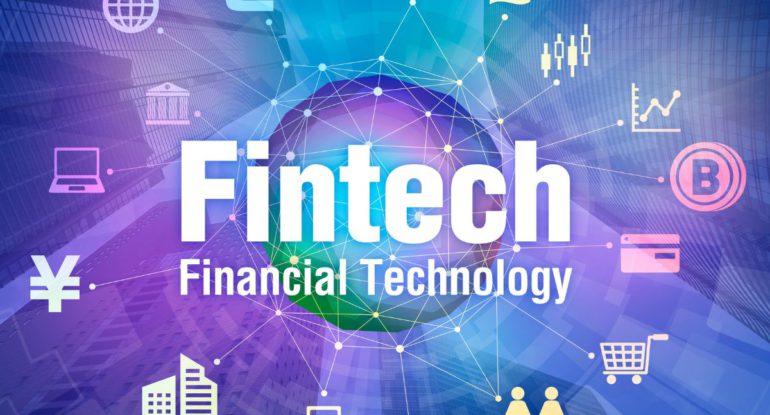Defining The Key Differences Between Fintech vs. Regtech vs. Suptech

The financial industry is undergoing a profound transformation fueled by technological advancements. Three key players in this evolution are FinTech, RegTech, and SupTech. While they all operate within the financial sector and share the common goal of enhancing efficiency, they serve distinct purposes and address specific challenges. This article delves into the intricate web of FinTech, RegTech, and SupTech, highlighting their key differences and examining their unique roles in reshaping the financial landscape.
FinTech: Revolutionizing Financial Services

Definition and Purpose: FinTech, short for Financial Technology, refers to the use of technology to deliver financial services more efficiently. Its primary goal is to leverage innovation to streamline traditional financial processes, making them faster, more accessible, and cost-effective.
Key Focus Areas:
- Payment Solutions: FinTech companies revolutionize payment methods, offering faster and more convenient alternatives to traditional banking transactions.
- Lending Platforms: Online lending platforms disrupt traditional banking models by providing streamlined loan application processes and quicker approval times.
- Digital Wallets and Cryptocurrencies: FinTech embraces digital currencies and wallets, challenging conventional banking systems.
RegTech: Navigating Regulatory Challenges
Definition and Purpose: RegTech, or Regulatory Technology, aims to assist businesses in complying with complex and ever-evolving regulatory requirements. It employs technology to automate and streamline regulatory processes, reducing compliance risks and costs.
Key Focus Areas:
- Compliance Automation: RegTech solutions automate compliance checks, ensuring that financial institutions adhere to regulatory frameworks.
- Risk Management: Advanced analytics and machine learning in RegTech help institutions assess and manage regulatory and operational risks effectively.
- Data Security: RegTech focuses on securing sensitive financial data, addressing cybersecurity challenges imposed by evolving regulations.
Also, read – Top 5 Fintech Skills In Demand In Blockchain Industry
SupTech: Empowering Supervisory Authorities
Definition and Purpose: SupTech, or Supervisory Technology, is centered around empowering supervisory authorities, such as central banks and regulatory bodies, with advanced technological tools. Its purpose is to enhance the supervision and monitoring of financial institutions.
Key Focus Areas:
- Data Analytics: SupTech utilizes data analytics to process and analyze large volumes of financial data, enabling authorities to gain insights and detect anomalies.
- Real-time Monitoring: SupTech tools provide real-time monitoring of financial institutions, allowing authorities to respond promptly to emerging risks.
- Predictive Modeling: Using machine learning algorithms, SupTech aids in predictive modeling, helping supervisory authorities anticipate potential challenges in the financial sector.
Key Differences between FinTech, RegTech, and SupTech
FinTech: Revolutionizing Financial Services
– Key Differences:
- Focus: FinTech primarily concentrates on enhancing user experiences and optimizing financial services for consumers. Its core mission is to introduce innovations that make financial transactions more convenient, efficient, and user-friendly.
- Objective: The overarching objective of FinTech is to disrupt traditional banking models and introduce technology-driven solutions that cater to evolving consumer expectations. It aims to improve accessibility, reduce costs, and democratize financial services.
- Application: FinTech applications are customer-centric, offering solutions such as mobile banking apps, digital payment platforms, robo-advisors, and peer-to-peer lending. Its innovations are geared towards directly impacting the end-user experience.
2. RegTech: Navigating Regulatory Challenges
– Key Differences:
- Focus: RegTech is intricately tied to regulatory compliance and risk management within the financial sector. Its primary focus is on helping businesses navigate the complex landscape of regulations more efficiently.
- Objective: Unlike FinTech, RegTech’s core objective is not direct customer service but rather the automation and streamlining of compliance processes. It seeks to ensure that financial institutions adhere to regulatory frameworks, reducing compliance risks and costs.
- Application: RegTech applications include compliance automation tools, risk management solutions, and platforms that enhance data security. Its innovations are designed to assist financial institutions in meeting regulatory requirements seamlessly.
3. SupTech: Empowering Supervisory Authorities
– Key Differences:
- Focus: SupTech operates at a regulatory level, focusing on empowering supervisory authorities such as central banks and regulatory bodies. Its emphasis is on providing tools and insights for effective oversight of financial institutions.
- Objective: While indirectly impacting end-users, SupTech’s primary goal is not customer service but rather enhancing the monitoring capabilities of regulatory bodies. It aids in real-time monitoring, data analytics, and risk assessment at a systemic level.
- Application: SupTech applications involve data analytics tools, real-time monitoring systems, and predictive modeling for supervisory purposes. Its innovations contribute to the regulatory authority’s ability to maintain a stable and secure financial ecosystem.
#China‘s financial authority is strengthening the supervision of #FinTech.@BeijingReview: https://t.co/Au2KNfwzQs #FinTech #RegTech #SupTech #banking #regulation #regulatory #compliance pic.twitter.com/j4xEab2S72
— Urs Bolt (@UrsBolt) December 25, 2018
Overlapping Realms: FinTech, RegTech, and SupTech

In the ever-evolving landscape of financial technology, the realms of FinTech, RegTech, and SupTech, though distinct in their primary objectives, often find themselves intersecting in crucial areas. These overlaps create a dynamic ecosystem where technological advancements contribute synergistically to reshape the financial sector. Let’s delve into the intricacies of these overlapping realms:
1. Data Management:
- FinTech’s User-Centric Approach: FinTech, driven by its user-centric ethos, harnesses cutting-edge data management techniques to enhance the customer experience. Whether it’s optimizing transaction processes, personalizing financial recommendations, or securing sensitive user data, FinTech relies on robust data management practices.
- RegTech’s Compliance and Data Governance: RegTech, while primarily focused on regulatory compliance, converges with FinTech in the realm of data management. Both sectors leverage advanced data governance strategies to ensure the integrity, security, and accuracy of financial data. The intersection becomes evident as regulatory compliance necessitates meticulous data handling, aligning with FinTech’s commitment to user data security.
- SupTech’s Analytical Insights: SupTech, when dealing with vast amounts of financial data for supervisory purposes, shares common ground with FinTech in leveraging data analytics. The objective is different – SupTech aims for regulatory oversight, while FinTech seeks to optimize user experiences. Yet, both rely on sophisticated data analytics to derive actionable insights.
2. Security:
- Unified Concern for Cybersecurity: Cybersecurity is a shared concern that unites FinTech, RegTech, and SupTech. As financial transactions and data exchanges become increasingly digital, the need for robust security measures is paramount. FinTech companies, RegTech solutions, and SupTech tools collectively contribute to fortifying the financial ecosystem against cyber threats.
- RegTech’s Compliance-Driven Security: RegTech’s emphasis on regulatory compliance extends to cybersecurity. The secure handling of financial data is not only a user trust imperative for FinTech but also a regulatory mandate for financial institutions. RegTech’s role in automating compliance processes aligns with the broader objective of ensuring secure and compliant financial operations.
- SupTech’s Vigilance in Monitoring: SupTech plays a crucial role in monitoring the cybersecurity practices of financial institutions. By providing supervisory authorities with real-time insights into potential vulnerabilities, SupTech enhances the overall security posture of the financial sector. This collaborative effort contributes to a more resilient and secure financial ecosystem.
3. Innovation:
- Shared Commitment to Technological Advancements: Innovation is a common thread that binds FinTech, RegTech, and SupTech. While each domain has its unique focus, they collectively contribute to the ongoing transformation of the financial sector through technological advancements.
- FinTech’s Front-End Innovation: FinTech, at the forefront of user-centric innovation, constantly explores novel ways to improve financial services. From mobile banking applications to AI-driven investment platforms, FinTech introduces innovations that redefine how users interact with financial systems.
- RegTech’s Efficiency-Driven Innovation: RegTech, driven by the need for regulatory compliance, fosters innovation in efficiency. Automation, machine learning, and AI-driven compliance checks represent RegTech’s contribution to streamlining processes within financial institutions.
- SupTech’s Analytical Advancements: SupTech, with its focus on supervisory oversight, drives innovation in analytical tools and models. Predictive analytics, real-time monitoring, and risk assessment technologies are examples of SupTech’s contributions to enhancing the supervisory capabilities of regulatory bodies.
In the nexus of FinTech, RegTech, and SupTech, the overlapping realms create a rich tapestry of collaboration and shared objectives. While each domain retains its unique focus and purpose, their convergence fosters a holistic approach to reshaping the financial sector. The collaborative efforts in data management, security, and innovation underscore the interconnected nature of these technological forces, propelling the financial industry into a new era of efficiency, compliance, and resilience.
Conclusion: FinTech, RegTech, and SupTech – The Triumvirate of Financial Evolution
In the intricate dance of financial technology, the collaboration between FinTech, RegTech, and SupTech unfolds as a triumphant symphony of innovation, compliance, and supervision. As we navigate this complex landscape, we witness the transformative impact of FinTech’s user-centric approach, RegTech’s meticulous web of compliance, and SupTech’s empowerment of regulatory bodies.
FinTech, with its user-driven innovations, has redefined how individuals interact with financial services. From streamlined transactions to personalized investment strategies, FinTech has democratized finance, placing the user at the center of the financial narrative.
Complementing this user-centric revolution, RegTech meticulously weaves a tapestry of compliance, ensuring that financial institutions navigate the labyrinth of regulations with finesse. It’s the unseen guardian, providing the necessary tools for institutions to adhere to complex regulatory frameworks while fostering efficiency.
SupTech, standing as the sentinel overlooking the financial ecosystem, empowers regulatory bodies to monitor, analyze, and safeguard the financial realm. With real-time data analytics and surveillance capabilities, SupTech enhances the resilience of the financial system, proactively addressing potential risks and ensuring a robust regulatory framework.
Together, these technological forces herald an era where finance transcends traditional boundaries, embracing efficiency, compliance, and vigilant supervision in the digital age. As the triad of FinTech, RegTech, and SupTech continues to evolve, it propels us into a future where financial services are not just transactions but experiences, where compliance is not a burden but a seamless process, and where supervision is not reactive but anticipatory.
In the tapestry of financial evolution, the threads of FinTech, RegTech, and SupTech intricately weave a narrative of progress, resilience, and adaptability. The financial landscape stands transformed, and the journey into this digital era continues, guided by the collaborative forces that define the next frontier of financial evolution





























































